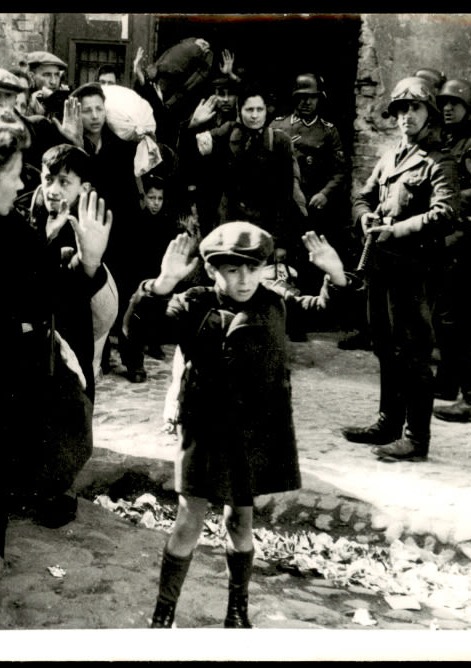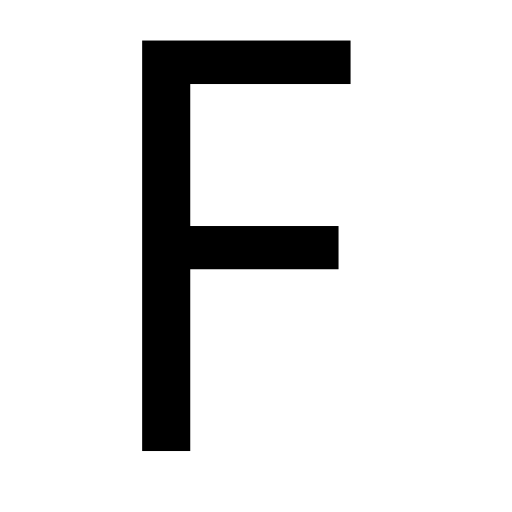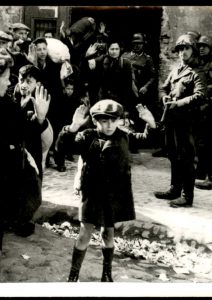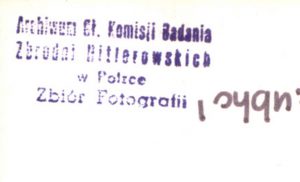
06 Feb WARSAW GHETTO BOY
In the best-known photograph taken during the 1943 Warsaw Ghetto uprising, a boy holds his hands over his head while SS-Rottenführer Josef Blösche points a submachine gun in his direction. The boy and others hid in a bunker during the final liquidation of the ghetto, but they were caught and forced out by German troops. After the photograph was taken, all of the Jews in the photograph were marched to the Umschlagplatz and deported to Majdanek extermination camp or Treblinka. The exact location and the photographer are not known, and Blösche is the only person in the photograph who can be identified with certainty. The image is one of the most famous photographs of the Holocaust, and the boy came to represent children in the Holocaust, as well as all Jewish victims.
The photograph depicts a group of Jewish men, women and children who have been forced out of a bunker by armed German soldiers. The original caption was “Forcibly pulled out of bunkers” (German: Mit Gewalt aus Bunkern hervorgeholt). Most of the Jews are wearing ragged clothing and have few personal possessions. After being removed from the bunker, they were marched to the Umschlagplatz for deportation to an extermination camp. In the center of the photograph is a small boy wearing a newsboy cap and knee-length socks who appears six or seven years old. He holds his hands up in surrender as SS-Rottenführer Josef Blösche holds a submachine gun pointing downwards in his direction.
The photograph was taken during the Warsaw Ghetto uprising (between April 19th and May 16th) in the Warsaw Ghetto. An Internet forum discussion on the “Marki Commuter Railway” Association for Defending the Remnant of Warsaw cautiously identified the location as Nowolipie 34 from similarities in the architectural details, especially the downspout. These claims are discussed in a 2018 Polish-language book, Teraz ′43 (Now ′43), by Magdalena Kicińska and Marcin Dziedzic. The photographer was either Franz Konrad or a member of Propaganda Company 689. Albert Cusian, Erhard Josef Knoblach and Arthur Grimm served as photographers in Propaganda Company 689; Cusian may have claimed to have taken the photograph. On trial in Poland, Konrad claimed to have taken photographs during the uprising only so that he could complain about Stroop’s brutality to Adolf Hitler. The court did not accept this claim. Convicted of personally murdering seven Jews and deporting a thousand others to death camps, Konrad was sentenced to death and executed in 1952.
Proceeds from the sale will be donated to help Holocaust survivors
This photo was printed and sent as a press photo by the Nazi propaganda system to a Polish newspaper to publish the success of the operation to liquidate the Warsaw Ghetto. At the end of the war in 1945 the photograph was confiscated by the Chief Commission for the Prosecution of Crimes against the Polish Nation (Polish: Główna Komisja Ścigania Zbrodni przeciwko Narodowi Polskiemu) is a governmental agency created in 1945 in Poland.
The photograph is handwritten on the back in German “Forcibly pulled out of bunkers” (German: Mit Gewalt aus Bunkern hervorgeholt). It is also stamped by The Commission for the Prosecution of Crimes against the Polish Nation.







Sorry, the comment form is closed at this time.